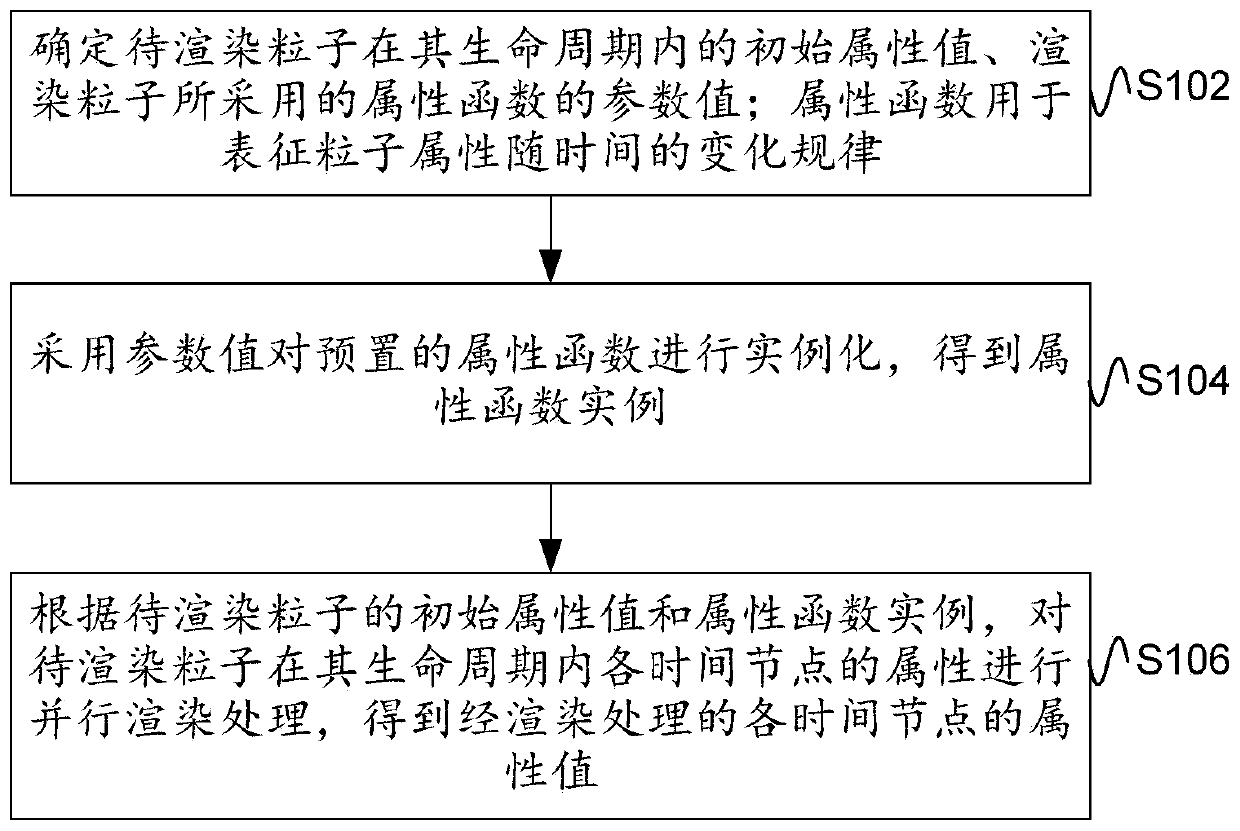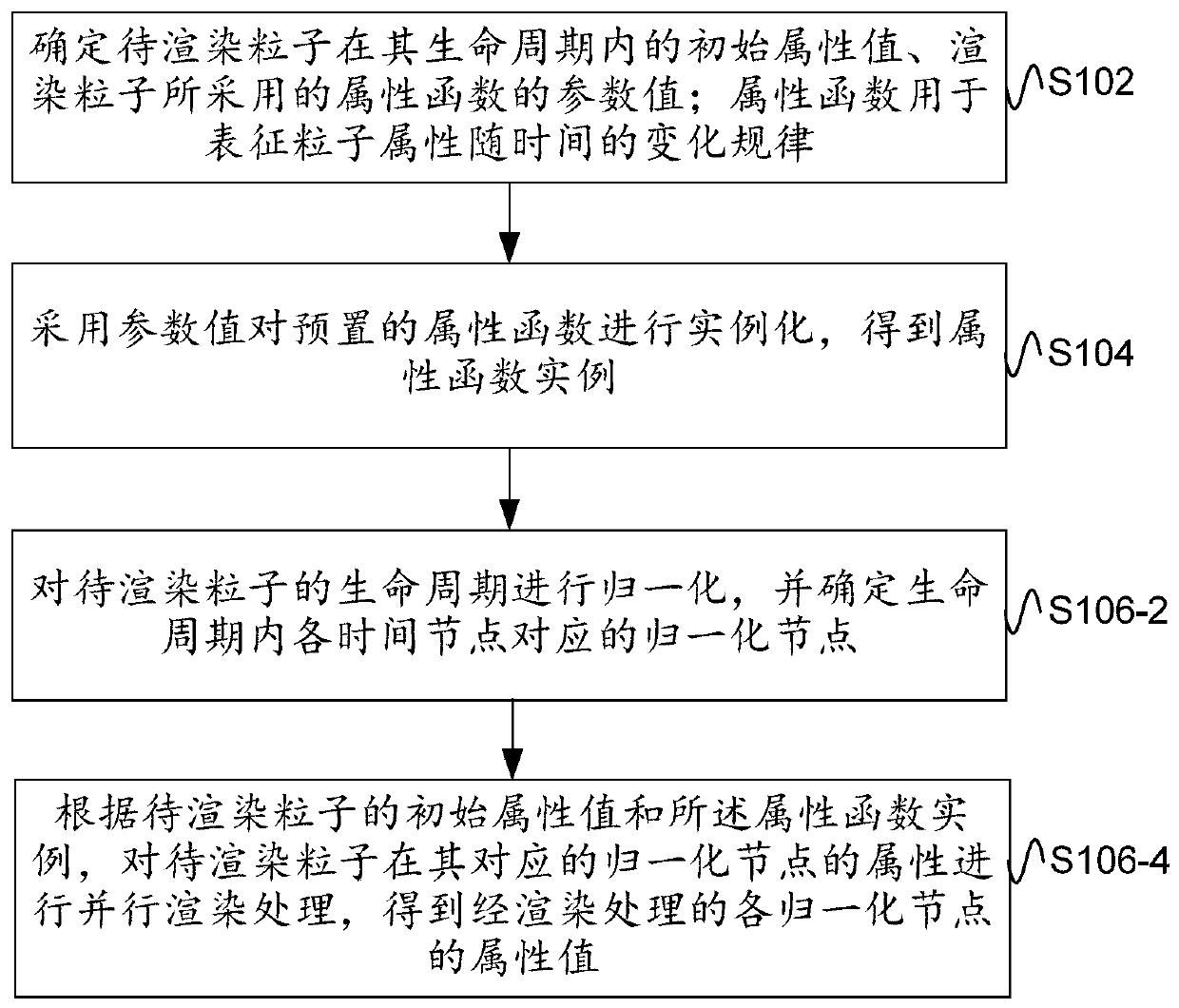Particle rendering method, device and apparatus
A particle and attribute technology, applied in the field of particle rendering methods, devices and equipment, can solve the problems of separate code programming and poor design reusability, and achieve the effect of improving rendering efficiency and reducing storage costs
- Summary
- Abstract
- Description
- Claims
- Application Information
AI Technical Summary
Problems solved by technology
Method used
Image
Examples
Embodiment 1
[0041] Based on the above application scenario architecture, figure 2 Schematic flowchart of the particle rendering method provided by the embodiment of this specification Figure 1 , figure 2 methods in figure 1 The rendering module in the execution, such as figure 2 As shown, the method includes the following steps:
[0042] Step S102, determine the initial attribute value of the particle to be rendered within its life cycle, and the parameter value of the attribute function used to render the particle; the attribute function is used to represent the change rule of the particle attribute over time.
[0043] Among them, the particles to be rendered can be a particle system composed of a large number of particles. A particle system can be regarded as a collection containing a large number of similarly drawn particles. The particles in the collection can be uploaded to the rendering module in batches for rendering. Each particle corresponds to its own life cycle, and the...
Embodiment 2
[0073] This embodiment is on the basis of embodiment one, to figure 2 The particle rendering methods shown are extended and supplemented.
[0074] image 3 Schematic flowchart of the particle rendering method provided by the embodiment of this description Figure II ,Such as image 3 As shown, the step S106 may include:
[0075] S106-2. Normalize the life cycle of the particle to be rendered, and determine the normalization node corresponding to each time node in the life cycle.
[0076] Specifically, the life cycle of a particle represents the existence time of the particle, and normalizing the life cycle may be normalizing life cycles of different durations into a unified interval, for example, normalizing into the interval [0, 1]. For example, the total life cycle of a particle is 3 seconds, and when the pixel animation progresses to 1.5 seconds, the normalized life cycle of the particle is 1.5s / 3s=0.5. When the particle life cycle > 0, the particle starts to calculat...
Embodiment 3
[0089] corresponding to the above Figure 2 to Figure 3 The described particle rendering method is based on the same technical idea, and the embodiment of this specification also provides a particle rendering device. Figure 4 A schematic diagram of the module composition of the particle rendering device provided by the embodiment of this specification, which is used to execute Figure 2 to Figure 3 Describes particle rendering methods such as Figure 4 As shown, the device includes:
[0090] The information determination module 201 is used to determine the initial attribute value of the particle to be rendered within its life cycle, and the parameter value of the attribute function used to render the particle; the attribute function is used to characterize the change rule of the particle attribute over time;
[0091] The instance processing module 202 instantiates the preset attribute function by using the parameter value to obtain the attribute function instance;
[0092]...
PUM
 Login to View More
Login to View More Abstract
Description
Claims
Application Information
 Login to View More
Login to View More - R&D
- Intellectual Property
- Life Sciences
- Materials
- Tech Scout
- Unparalleled Data Quality
- Higher Quality Content
- 60% Fewer Hallucinations
Browse by: Latest US Patents, China's latest patents, Technical Efficacy Thesaurus, Application Domain, Technology Topic, Popular Technical Reports.
© 2025 PatSnap. All rights reserved.Legal|Privacy policy|Modern Slavery Act Transparency Statement|Sitemap|About US| Contact US: help@patsnap.com



